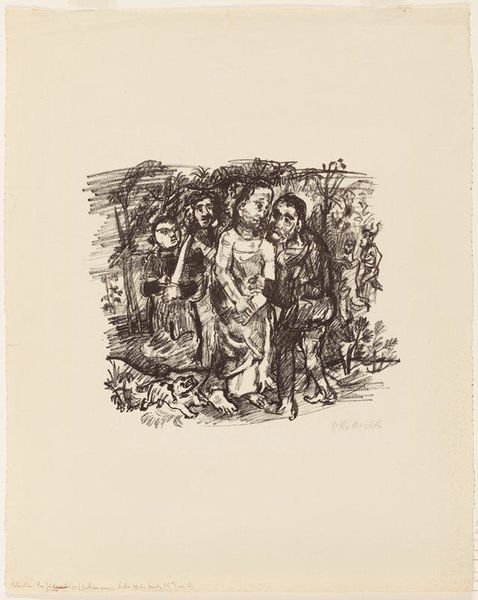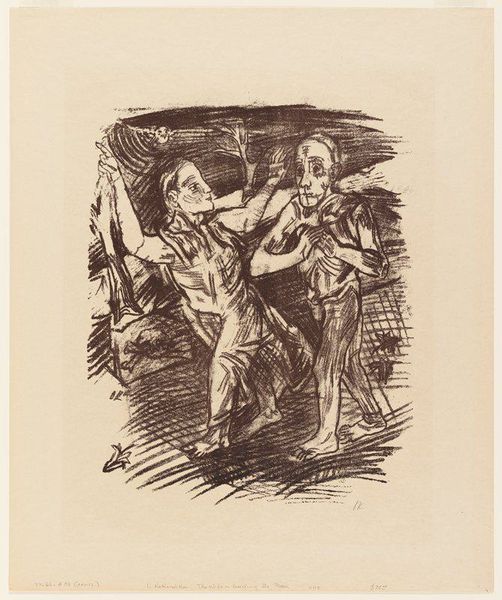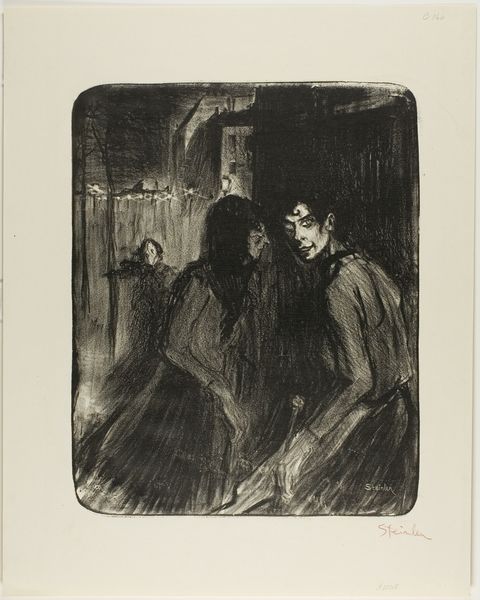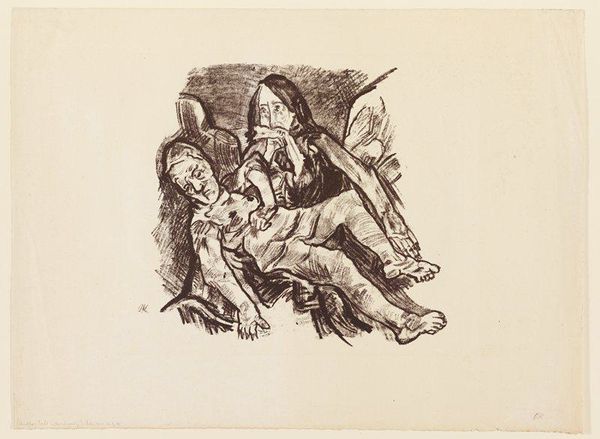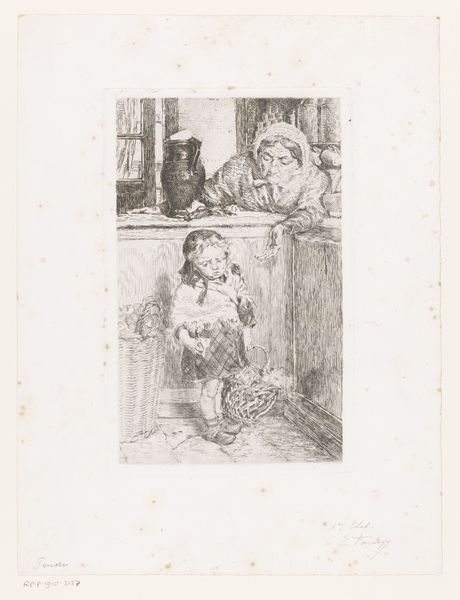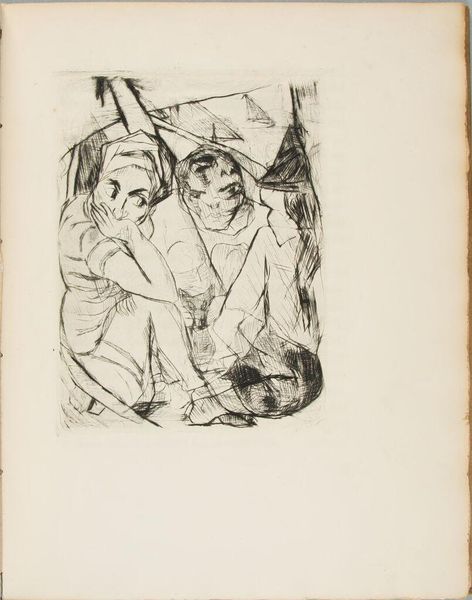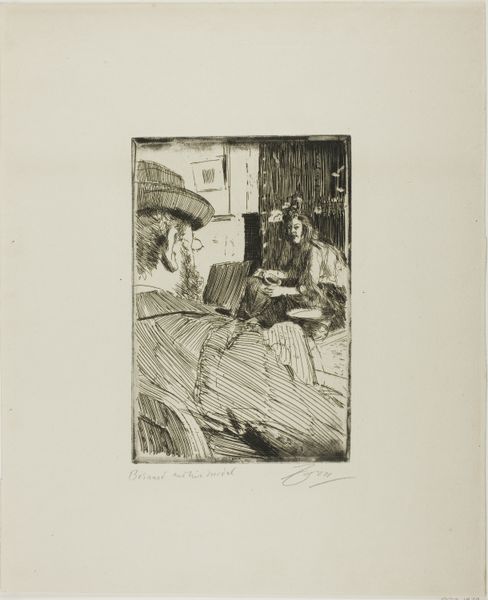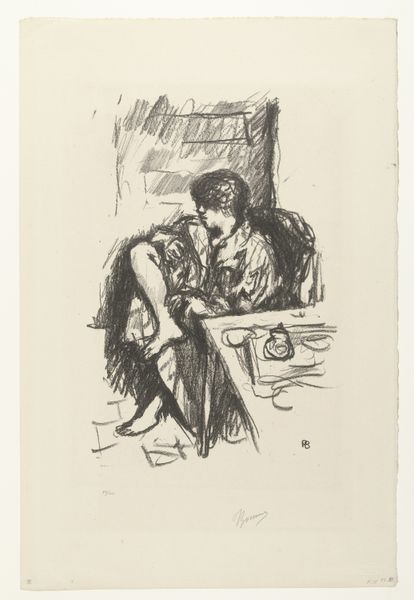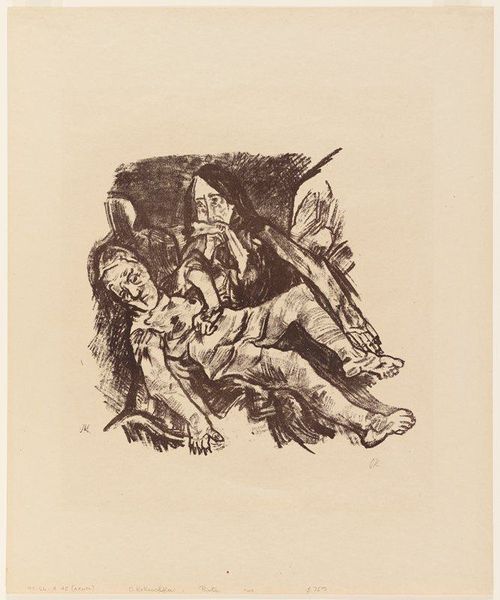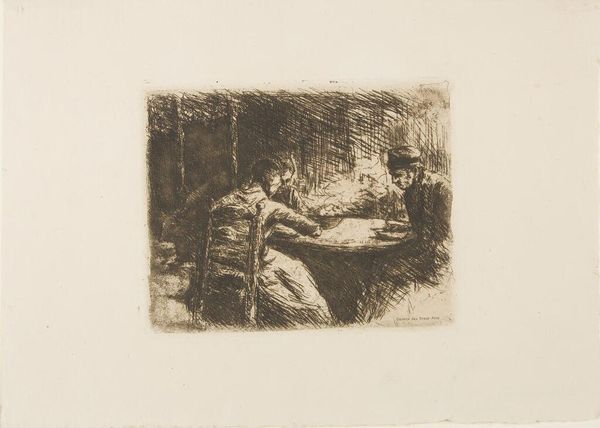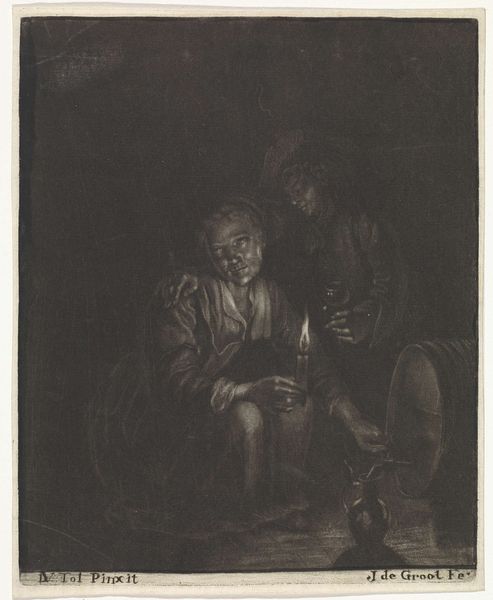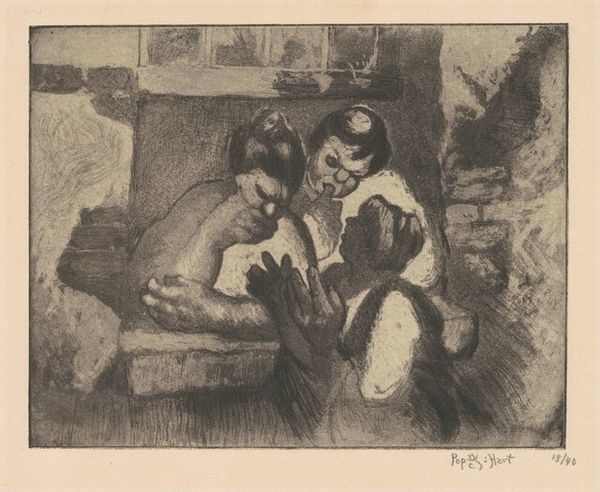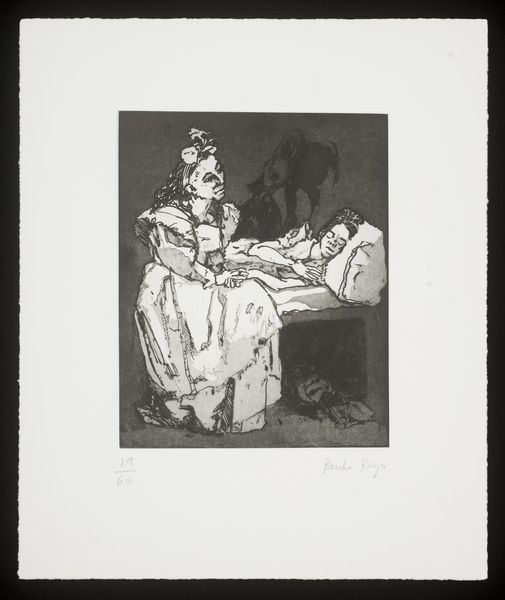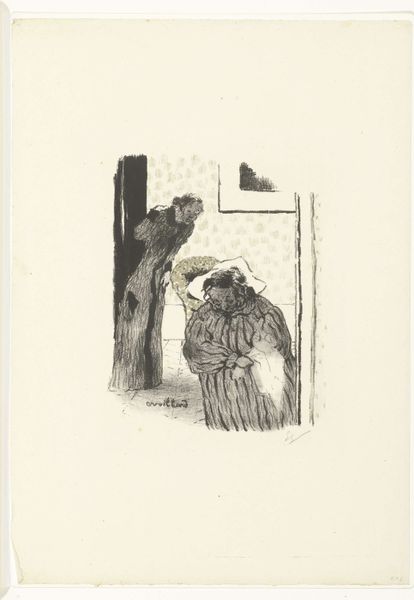
lithograph, print
#
art-nouveau
#
lithograph
# print
#
landscape
#
figuration
#
expressionism
#
nude
Dimensions: 22 x 18 1/4 in. (55.88 x 46.36 cm) (plate)22 x 18 1/4 in. (55.88 x 46.36 cm) (sheet)
Copyright: No Copyright - United States
Curator: Here we have Oskar Kokoschka’s 1914 lithograph, "Male and Female Nude in a Landscape," currently residing here at the Minneapolis Institute of Art. Editor: The emotional weight is immediately palpable, wouldn't you say? There’s an unsettling rawness to the figures that evokes feelings of disquiet. Curator: Indeed. The gestural linework, so characteristic of Kokoschka's Expressionist style, certainly contributes to that unsettling mood. Note how the frenzied marks create both form and shadow. It appears rapidly produced, perhaps even impulsive. Editor: Look at the marks of the lithographic crayon; their material presence feels so important. One really sees Kokoschka's hand at work—laboring—transferring image to stone, doesn't it? I think that connection amplifies the subjects' own sense of raw vulnerability. The nude figures here aren't idealized; they are rendered in a way that exposes their vulnerability. Curator: Yes, that very directness is part of the aesthetic intent. However, consider how the formal elements support this: The landscape itself appears turbulent. Sharp, angular lines form craggy mountains and ominous shadows, amplifying the psychological unease exuded by the figures. The landscape ceases to be background, but rather an extension of their emotions. Editor: Absolutely, but I also consider what it means to create and then reproduce images of nude bodies during wartime. There is a socio-political resonance, especially regarding trauma to male bodies. How might the labor of art reflect this trauma? This process brings to question how those works engage with a certain type of politics. Curator: That’s a stimulating reading, although it leads away from what I read as the focus on existential states of being. These anguished figures in a state of exposure amid existential nature create the expressionist dynamic. I notice the tonal range Kokoschka coaxes from the lithographic stone is impressive. Editor: Agreed; considering material availability, how many prints were ultimately produced using this process? How was this medium considered at that time in contrast with traditional paintings and etchings? To contemplate all the implications certainly amplifies its affect. Curator: Reflecting upon the relationship between subject and means does illuminate a unique path to consider, indeed. Thank you. Editor: Thank you; my perceptions about the work have expanded now.
Comments
No comments
Be the first to comment and join the conversation on the ultimate creative platform.
